the feed
What is Shutter Speed and How to Use it Like a Boss
Shutter speed is mainly responsible for 2 things: changing the brightness of your photo and freezing action or blurring motion.
Let's talk about shutter speed, shall we?
You know that button you press to actually take a picture? It's called the Shutter Button, or shutter release. Want to know why? Because it controls the shutter, and what tf does that actually mean? Let's get into it.
First, let's talk about what and where the shutter is. Think of it like a curtain, a blackout curtain, that sits in front of the camera's sensor. In order for light to hit the sensor and produce photo magic, the shutter has to open. How long that "curtain" is open is called Shutter Speed. The longer it is open, the more light hits the sensor. We will talk about what this does to your final image in a bit.
How Does Shutter Speed Affect my Image?
Shutter speed is responsible for two particular things: changing the brightness of your photo and creating dramatic effects by either freezing action or blurring motion. When you use a long shutter speed (also known as a “slow” shutter speed), you end up exposing your sensor for a significant period of time.
A slow shutter speed will create motion blur when dealing with a moving subject. Think about car advertisements, where a sense of speed and motion is communicated to the viewer by intentionally blurring the moving wheels or how the background seems to be whizzing by. This is also how to create those beautiful "milky" moving water photos. Slow that shutter down.
Check out the 2 images below:
In the first image, the motion blur of the foreground and background gives you (the viewer) a sense of fast motion. This is using a slow shutter while moving the camera along with the rider.
In the second Image, the rider is frozen in action because a fast shutter was used.
Slow Shutter Speed = Motion Blur
Slow Shutter Speed = Motion Blur
Fast Shutter Speed = Frozen Action
Fast Shutter Speed = Frozen Action
Slowing down the shutter is also necessary to shoot in dim or dark environments such as photographing the Milky Way. Keeping the shutter open will allow the sensor to soak up as much light as possible. An example: throw your camera on a tripod, slap a 2 second timer on to minimize camera shake, and set the shutter to 30 seconds to create something like the photo below.
Milky Way Photographed using a slow shutter speed
Shutter Speed and Exposure
Shutter speed also affects the overall exposure of an image. A long shutter allows your camera sensor to gather a lot of light, and the resulting photo will be quite bright. A quick shutter speed means your camera sensor is only exposed to a small fraction of light, resulting in a darker photo.
Keep in mind that Shutter speed is only 1 of the 4 elements to consider when it comes to proper exposure. There is Aperture, ISO, and the brightness of what you are photographing. Unless you're in a studio, you can't do much to control the light of the environment, but you can control your camera settings. Photography is the art of understanding how to set these properly to achieve the image you want.
Take Me To Chapter 4: Let's Break Down What Aperture Is, ya?
Photography Basics Organization
(This will be filled in with links as I produce them) - Stay Tuned!!
Chapter 1:How Do I Use This F*cking Camera?!
Chapter 2:So What The F*ck is Photography Anyway??
Chapter 3:What is Shutter Speed and How to Use it Like a Boss (You are here)
Chapter 4: Let's Break Down What Aperture Is, ya?
Chapter 5: ISO
Chapter 6: Composition
Chapter 7: Metering
Chapter 8: Camera Modes
Chapter 9: Focusing
Chapter 10: Flash
Chapter 11: Camera Settings
Chapter 12: How to Take Sharp Pictures
Chapter 13: Photography Tips for Beginners
Chapter 14: Photography Ideas
How Do I Use This F*cking Camera?
A step-by-step guide to using your camera like a boss. How can I take better photos? What settings should I use? And more Photography Basics!
Where to Begin
Treat this Photography Basics Series like a book. It is best to read it from start to end because each chapter builds on prior chapters. However, if you want to jump to something more specific, you’re welcome to skip ahead to a later chapter. Here is the overall organization of the guide:
Photography Basics by Chapter:
(This will be filled in with links as I produce them) - Stay Tuned!!
- Chapter 1: How Do I Use This F*cking Camera? (You are here)
- Chapter 2: So What The F*ck is Photography Anyway?
- Chapter 3: What is Shutter Speed and How to Use it Like a Boss
- Chapter 4: Aperture
- Chapter 5: ISO
- Chapter 6: Composition
- Chapter 7: Metering
- Chapter 8: Camera Modes
- Chapter 9: Focusing
- Chapter 10: Flash
- Chapter 11: Camera Settings
- Chapter 12: How to Take Sharp Pictures
- Chapter 13: Photography Tips for Beginners
- Chapter 14: Photography Ideas

Why I Wrote This
It's the set of questions I get asked all of the time. How can I take better photos? What settings should I have my camera on? Do I have to shoot in Manual Mode?
I have been a professional photographer for 15 years now. I have photographed in almost any imaginable scenario, climate, and circumstance forcing me to learn most of what I know on the fly. I admit, that most of my learning came through making mistakes. I hope this guide will allow others to learn from my mistakes and skip right past that painful part of the learning process.
Let me also say that I am writing in this in a fashion that makes the most sense to me. I’m going to give examples about how I personally understand camera settings, lighting, posing and all the good things that encompass photography. Most of my examples will focus on the type of work I do - adventure, lifestyle, product, editorial, etc. however all of the ideas and principles that I share can be applied to any type of photography.
Let me say this: Youtube University is an insanely great asset to use to learn all about photography. However, I would highly suggest having a rock-solid understanding of the basics before blindly following along. Once you have the basics dialed in, have at it on YT.
An Easy Guide To Cleaning Your Water Bottle
Quality water bottles are great for a variety of activities. An eco-friendly alternative to disposable plastic water bottles, they are durable and leakproof and should last you a long time as long as you care for them properly
Quality water bottles are great for a variety of activities. An eco-friendly alternative to disposable plastic water bottles, they are durable and leakproof and should last you a long time as long as you care for them properly. Washing them immediately after use and letting them dry is the best method, but that doesn’t always happen. I’ve outlined a few ways to clean your water bottle below to keep it fresh and ready to go!
Why Should You Clean You Water Bottle?
Like any household dishware, keeping your eating surfaces, utensils and plateware helps reduce bacteria buildup and funk. Plus, it's just downright gross not to wash your dishes, so get with it dude. I used to live with a guy who only rinsed his dishes with water after using them. That's gross - the rest of us had no idea, and we were using the same nasty dishes for years.
On a larger scale, having a dedicated water bottle to keep with you will help reduce single-use plastics such as disposable water bottles. It goes a long way. I have a few water bottles of different sizes and materials that serve their purpose for certain things such as airplane travel, hiking, running errands, etc. This mean I use them, wash them, and then they sit. This brings us to the next question:
How Often Should You Clean Your Water Bottle?
The "correct" answer that I should give here, and the one that won't get any backlash in the comment section, is that you should wash your water bottle after each use. If that's your jam, then have at it. I don't think it is necessary unless you are using powdered or sugary mixes in your water bottle. These will build up bacteria much more quickly then plain water, so they will need to be cleaned more often.
After each use, I rinse with hot water and let air dry upside down. I give it the sniff test before or after each use. This is my gauge and it works for me. Now, again, this is for when I am only using water in my water bottle and when I am the only one using it. Who shares water bottles anyway? #couplegoals. Gross.
The Baking Soda Shake:
Our preferred method. It's the quickest, cheapest, and most effective method. Say hello to your new best friend, Baking Soda. Give you water bottle a good rinse, maybe wash it down with dish soap if you would like, and then let's get to the good stuff. Drop 1/4 cup of baking soda in. Fill the Nalgene 3/4 full with HOT water. Close the Lid and shake your heart out. Really get that thing shook up, and make sure you get the underside of the cap as well. Rinse it out real good and dry.
This is the ultimate cleaning method to get all of the funk out of your water bottle. I used to be very hesitant to put any kind of powdered drink, such as Ultima or any other electrolyte, in my water bottles, even though I love having something other then water to sip on when I'm adventuring. I don't need to stress it anymore. Using baking soda gets all that and then some out of my bottle. Give it a try.
Oh, and check out this web story we made to break it down.
Now let's get to the more straightforward methods.
Dishwasher:
Putting your water bottle in the dishwasher is the easiest and least time-consuming way to clean it. The majority of them can be washed in the dishwasher, but verify the manufacturer's instructions first. Because the lid may not tolerate the heat as well as the bottle itself, it should be placed on the upper rack away from the heating element. If your dishwasher's higher rack won't fit the size of your water bottle, don't worry; there are other cleaning solutions.
Soak in Warm, Soapy Water:
Allow the water bottle to soak in a sink with warm water and a little bit of mild dish soap. Shake it to disperse the soapy water, then rinse thoroughly and dry it.
There should be no soapy flavor left in the bottle if you use a tiny amount of mild soap. If you don't want to use soap, you can clean the bottle with warm water and lemon or warm water and baking soda.
This is especially useful if your bottle is solely used for water and other non-staining drinks. If you are like me and sometimes toss in some Ultima or other electrolyte drink mix, you will need to get a bit more aggressive in your cleaning. (hello, baking soda; see above)
Denture Cleaning Tablets
You can buy water bottle cleaning tablets or a new technology disinfectant glass cleaner if you want a professional cleaning product to ensure that your bottle is properly disinfected. Simply dissolve the cleaning tablets in water and allow them to dissolve in the bottle overnight. Give it a good shake before rinsing it thoroughly.
Shoppers tip: Water bottle cleaning tablets can be replaced with denture cleaning tablets at a lower cost. We use Polident Overnight Whitening Antibacterial Denture Cleanser Effervescent Tablets (man, that's a mouth full - see what I did there?). This works, but does leave a minty flavoring to your bottle unless you wash again after rinsing. Make sure you choose a brand-name denture-cleaning tablet with increased cleaning power to ensure it actually does what it says it's going to do.


How to Take Long Exposure Photos of Waterfalls And Water
Tutorial: How to Take Long Exposure Photos of Waterfalls And Water. Super simple breakdown for anyone looking to learn how.
How to Shoot Long Exposure Water Photos
Long Exposure Photography might have an impact on the viewers similar to magic, but trust me, it is not. Cascading water is exciting to watch and photograph. Raging rivers also make beautiful photographs. Surging white water rapids, briny mist, and cascading spray are all the elements you need for a great picture.
Here are 8 tips to consider when photographing water in motion:
1 - Use a shutter speed of 1/15 of a second or slower. A slow shutter speed renders moving water as a silky white blur. Using an ND filter can help slow down the shutter speed.
2 - Use a low ISO setting. A low ISO setting gives you a relatively small aperture, which ensures a large depth of field.

3 - Use a tripod. When you use a slow shutter speed, stabilize the camera to get a sharp picture. Having a solid travel tripod is a must.
4 - Use a neutral density filter in bright light. In bright light, you won’t be able to use a slow shutter speed and get a properly exposed image. A neutral density filter cuts down on the amount of light reaching the sensor, which means you can get a properly exposed image using a slow shutter speed.If you use neutral density filters on a regular basis, consider purchasing a variable neutral density filter. This is actually two filters in one. You rotate the outer ring to dial in the strength of the filter.
5 - Use a fast shutter speed when you want to freeze the motion of a raging river. You can also use a fast shutter speed when you want to show the details of a waterfall. You may have to increase the ISO setting when using a fast shutter speed to achieve a large depth of field, which requires a small aperture. Don’t increase the ISO too high or you’ll end up with a noisy image; use a tripod instead.
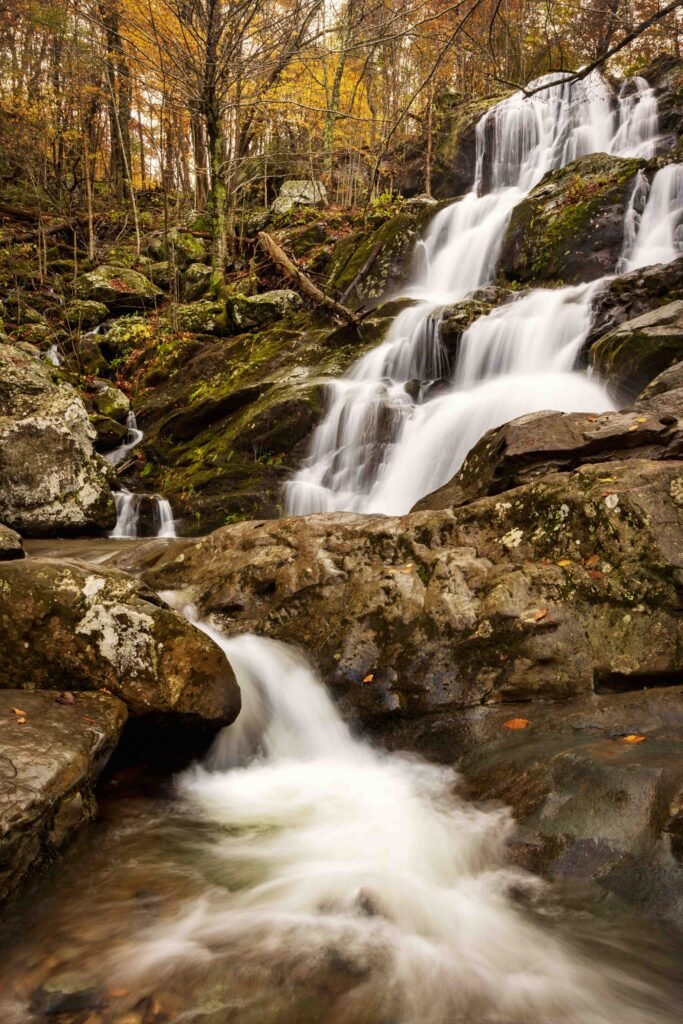
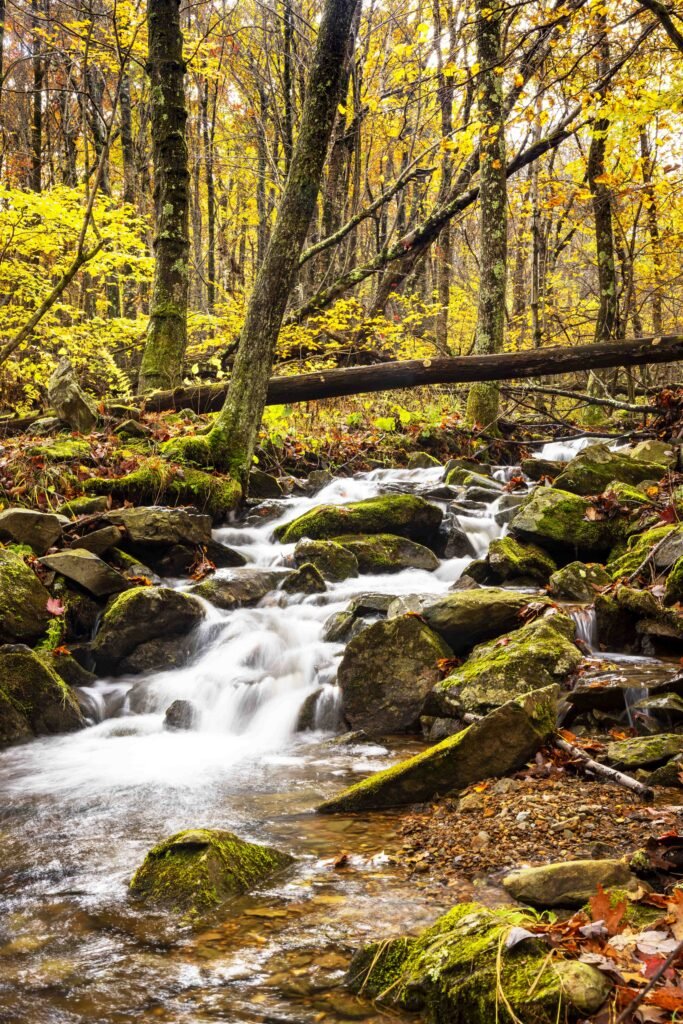
When you compose the image, position the horizon line in the lower third of the image. It’s also a good idea to place the waterfall to one side of the image.
6 - Rotate the camera 90 degrees when photographing a waterfall. This is known as portrait format. Rotate the camera 90 degrees any time you photograph a subject that is taller than it is wide. The only exception to this rule would be a waterfall like Niagara Falls that is actually wider than it is tall. I always have an L-bracket on my camera so I can quickly switch from landscape to portrait.
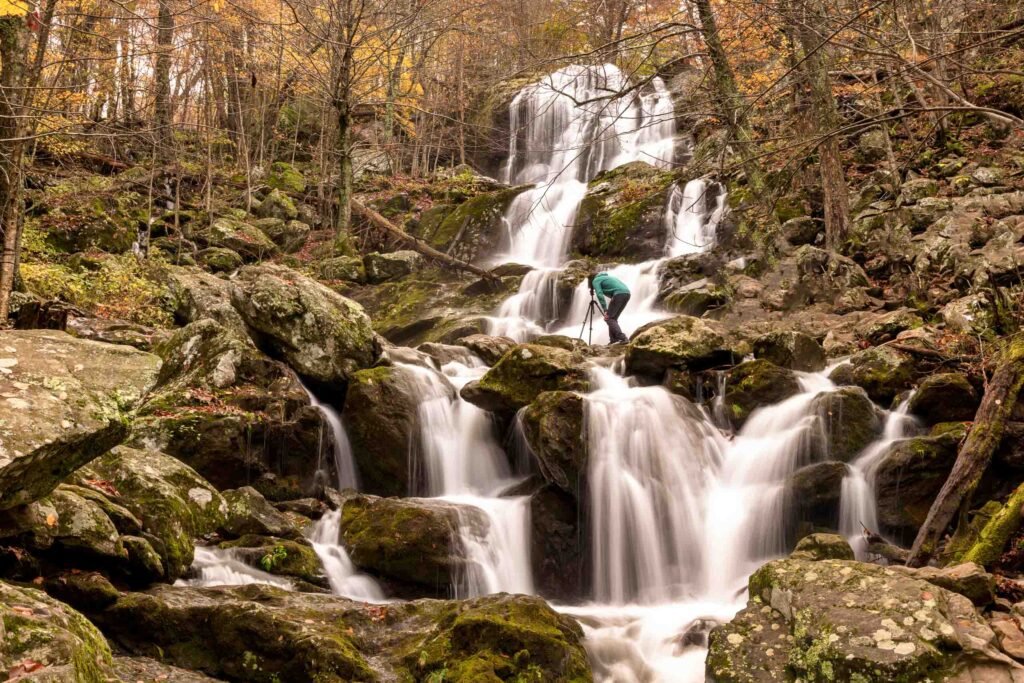
7 - Take a picture downstream from a waterfall. You’ll often find wonderful details when you venture a couple of hundred feet downriver from a waterfall, such as this image that was photographed a few hundred feet down a waterfall in Shenandoah National Park.
Camera Gear I use for These:
- Camera: Canon EOS R5
- Lens: Canon EF 24-105mm f/4L IS USM Zoom Lens
- Tripod: Peak Design CF Travel Tripod
- Polarizer Lens: B + W Circular Polarizer Kaesemann - Xtra Slim Mount
- L-Bracket : SUNWAYFOTO PCLO-R5 L Bracket
Wrapping Up
This will be added to my travel photography tutorial series. These long exposure photos make a huge impact on your travel photos or videos. Pair this with an Iphone Hyperlapse and you've got a banger of a travel video!
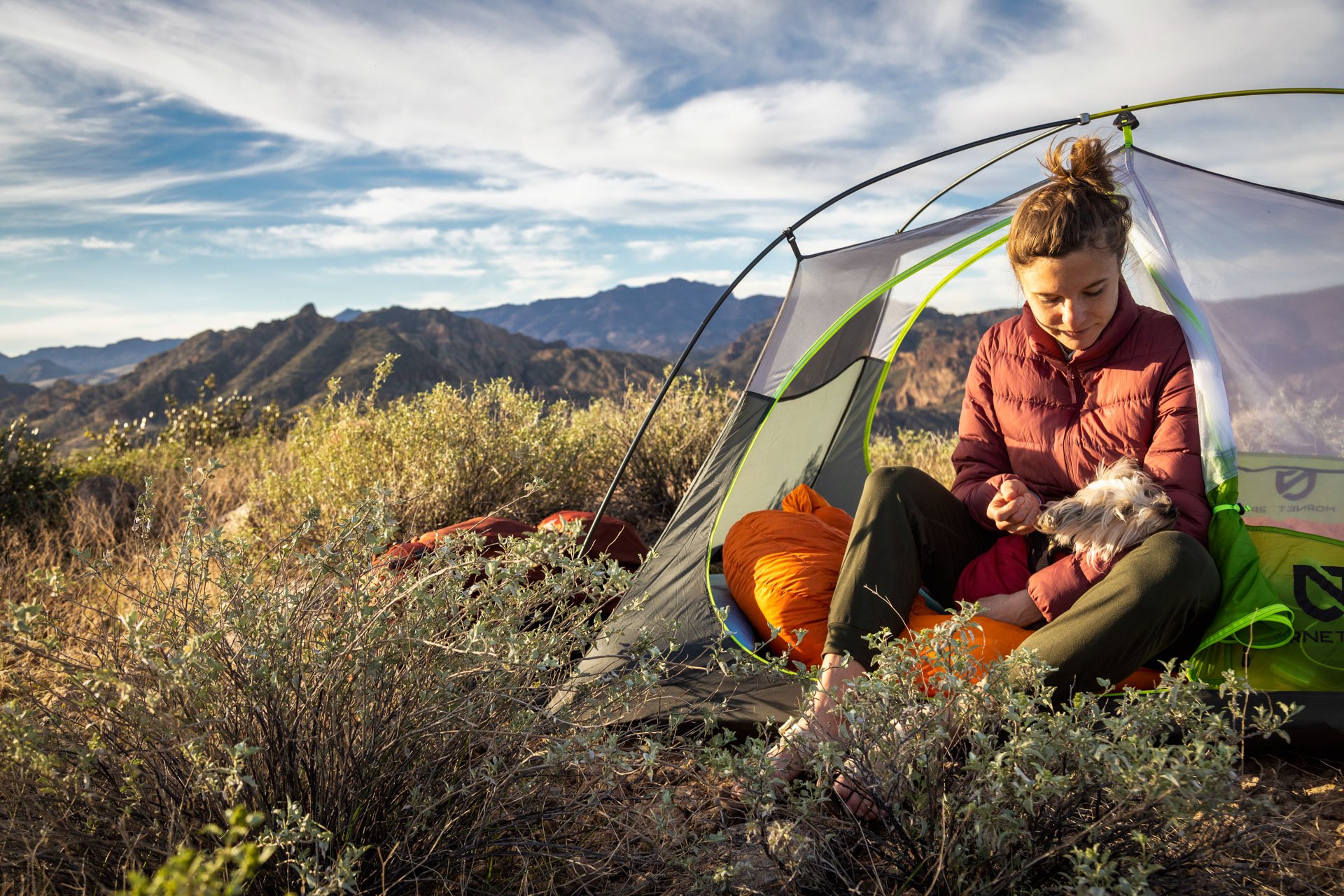
OUTDOOR
ADVENTURE
Featured Posts
HIKING
|
FLY FISHING
|
CAMPING
|
BACKPACKING
|
GEAR REVIEWS
|
HIKING | FLY FISHING | CAMPING | BACKPACKING | GEAR REVIEWS |
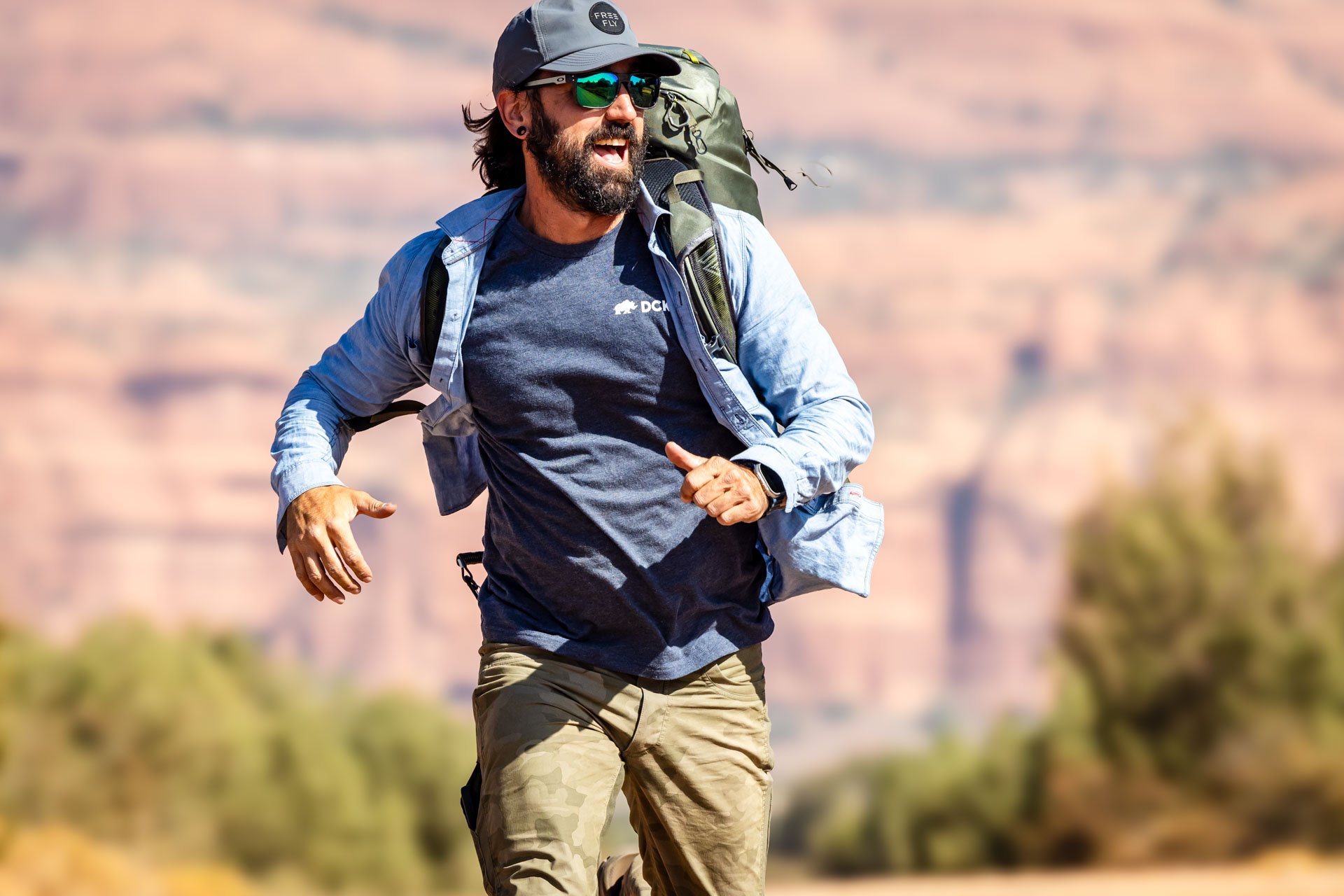
Best of
Top Clothing Brands of 2023
Discover unbeatable deals on Patagonia winter essentials at the REI Outlet sale! Get up to 40% off on jackets, parkas, and more.
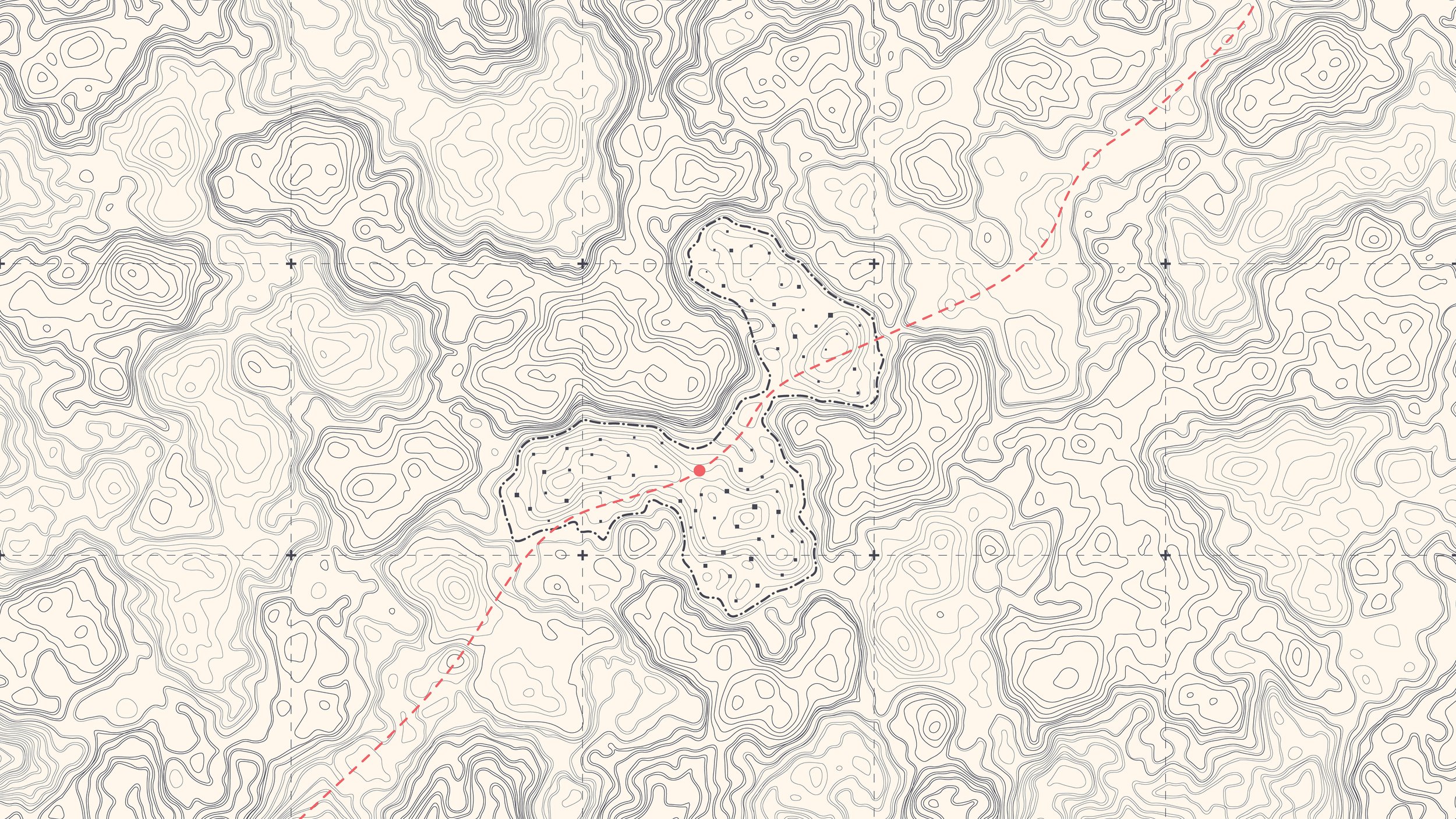
Subscribe to Our Newsletter
Sign up with your email address to receive news and updates.
Get in touch.
Just like in a hardcore round of intense pickleball, communication is key! Reach out with any questions, comments, beer recommendations, inquiries, critiques and jokes.



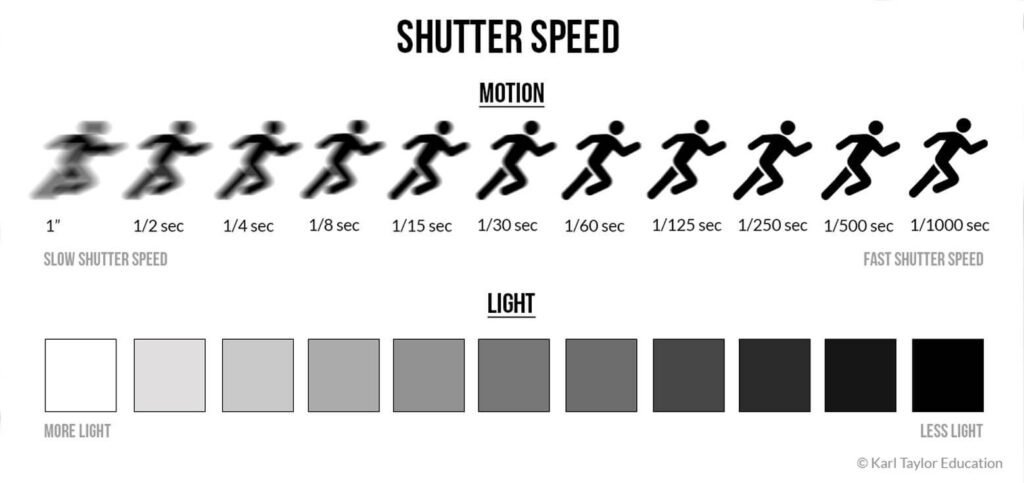








I recently installed the YZONA Rear Cargo Basket on my 2025 Ford Bronco Badlands. From unboxing to real-world use, here’s how it went — plus my honest thoughts on build quality, install, and performance.